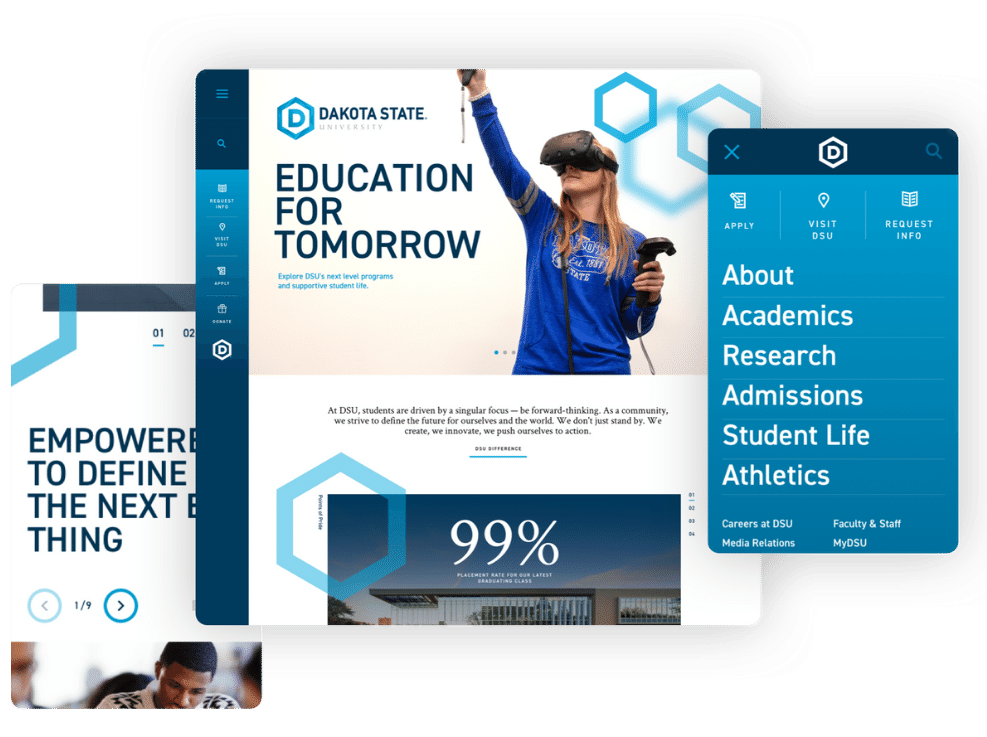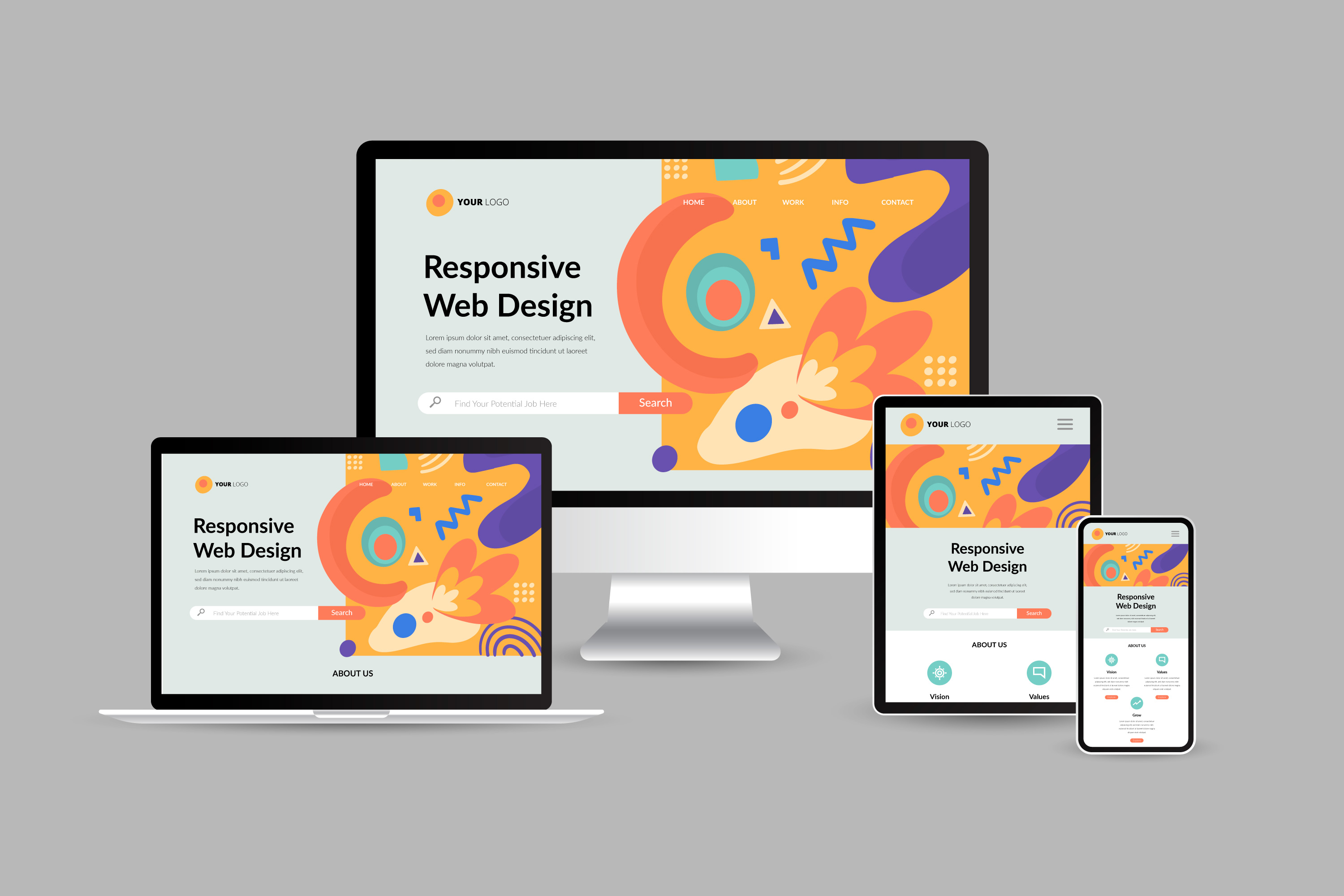Best Practices in Website Design for a Polished Feel
Best Practices in Website Design for a Polished Feel
Blog Article
Crucial Concepts of Internet Site Design: Developing User-Friendly Experiences
By focusing on individual demands and preferences, developers can promote involvement and fulfillment, yet the ramifications of these concepts extend past plain functionality. Recognizing how they intertwine can substantially influence a site's overall effectiveness and success, triggering a closer assessment of their private duties and collective impact on customer experience.

Value of User-Centered Style
Prioritizing user-centered design is important for developing effective sites that satisfy the needs of their target audience. This strategy places the individual at the center of the layout procedure, making sure that the web site not just operates well however likewise resonates with individuals on a personal degree. By comprehending the individuals' habits, choices, and objectives, developers can craft experiences that promote interaction and contentment.

In addition, embracing a user-centered design ideology can lead to boosted access and inclusivity, catering to a diverse audience. By considering different user demographics, such as age, technological proficiency, and social backgrounds, developers can develop internet sites that are inviting and functional for all.
Inevitably, prioritizing user-centered design not just boosts individual experience yet can also drive vital organization end results, such as boosted conversion rates and client commitment. In today's competitive digital landscape, understanding and prioritizing customer needs is a crucial success factor.
Intuitive Navigation Structures
Reliable site navigating is typically a vital aspect in improving customer experience. User-friendly navigation structures allow users to find info promptly and successfully, decreasing aggravation and raising involvement. An efficient navigating food selection ought to be simple, logical, and consistent throughout all pages. This permits customers to anticipate where they can locate details web content, hence advertising a smooth browsing experience.
To produce instinctive navigating, designers should focus on clarity. Labels ought to be detailed and acquainted to individuals, preventing jargon or uncertain terms. An ordered framework, with main categories leading to subcategories, can even more aid users in comprehending the connection in between various areas of the site.
In addition, integrating visual hints such as breadcrumbs can assist individuals with their navigation course, permitting them to quickly backtrack if required. The incorporation of a search bar additionally enhances navigability, approving individuals route accessibility to content without needing to browse with several layers.
Flexible and responsive Formats
In today's electronic landscape, ensuring that websites function seamlessly across various tools is crucial for individual complete satisfaction - Website Design. Adaptive and responsive designs are two crucial techniques that allow this performance, dealing with the varied variety of screen dimensions and resolutions that customers may run into
Receptive designs employ liquid grids and flexible images, enabling the site to immediately adjust its elements based on the screen dimensions. This method provides a regular experience, where material reflows dynamically to fit the viewport, which is particularly helpful for mobile users. By using CSS media inquiries, developers can develop breakpoints that optimize the format for various devices without the demand for separate styles.
Adaptive layouts, on the other hand, utilize predefined layouts for details display sizes. When a customer accesses the website, the server spots the gadget and serves the appropriate layout, guaranteeing an optimized experience for differing resolutions. This can lead to quicker loading times and improved efficiency, as each design is tailored to the tool's capabilities.
Both responsive and flexible designs are important for enhancing individual interaction and fulfillment, eventually adding to the internet site's general performance in satisfying its goals.
Regular Visual Power Structure
Establishing a consistent visual pecking order is crucial for assisting users via a site's web content. This principle guarantees that info is offered in a fashion that is both interesting and user-friendly, enabling users to quickly comprehend the material and browse. A distinct pecking order utilizes different design aspects, such as dimension, spacing, contrast, and shade, to create a clear difference in between different kinds of web content.

Moreover, constant application of these visual hints throughout the internet site promotes familiarity and trust fund. Users can swiftly learn to acknowledge patterns, making their interactions a lot more efficient. Eventually, a solid visual power structure not only improves customer experience but also boosts general website functionality, motivating deeper engagement and facilitating the desired activities on a site.
Access for All Users
Ease of access for all customers is an essential facet of website style that makes sure every person, regardless of their disabilities or abilities, can engage with and gain from on-line web content. Creating with accessibility in mind entails executing practices that accommodate diverse user demands, such as those with aesthetic, acoustic, electric motor, or cognitive problems.
One important standard is to follow the Internet Web Content Accessibility Standards (WCAG), which supply a framework for producing obtainable digital experiences. This includes utilizing sufficient shade contrast, providing message options for pictures, and guaranteeing that navigating is keyboard-friendly. Additionally, employing receptive layout methods ensures that sites function effectively throughout different tools and display sizes, further enhancing accessibility.
Another crucial factor is making use of clear, succinct language that prevents jargon, making material understandable for all individuals. Engaging customers with assistive modern technologies, such as display visitors, requires mindful interest to HTML semantics and ARIA (Easily Accessible Rich Internet Applications) duties.
Inevitably, focusing on availability not only meets legal responsibilities but additionally broadens the audience reach, promoting inclusivity and improving user complete satisfaction. A dedication to availability reflects a devotion to producing fair digital environments for all individuals.
Final Thought
To conclude, the necessary principles of website style-- user-centered layout, intuitive navigation, receptive designs, consistent aesthetic pecking order, and ease of access-- jointly add to the creation of easy to use experiences. Website Design. By focusing on user requirements and ensuring that all individuals can successfully involve with the website, designers boost use and foster inclusivity. These principles not only improve customer complete satisfaction yet also drive positive company end results, eventually showing the essential importance of thoughtful site style in today's electronic landscape
These approaches provide invaluable understandings right into individual assumptions and discomfort factors, making it possible get redirected here for developers to navigate to this website tailor the website's features and content accordingly.Efficient internet site navigating is usually a vital aspect in improving individual experience.Developing a constant visual hierarchy is pivotal for directing users through an internet site's web content. Inevitably, a solid aesthetic pecking order not only boosts customer experience yet additionally enhances general site use, urging much deeper interaction and assisting in the preferred actions on a website.
These principles not just enhance user complete satisfaction but also drive favorable service outcomes, inevitably showing the critical value of thoughtful site layout in today's electronic landscape.
Report this page